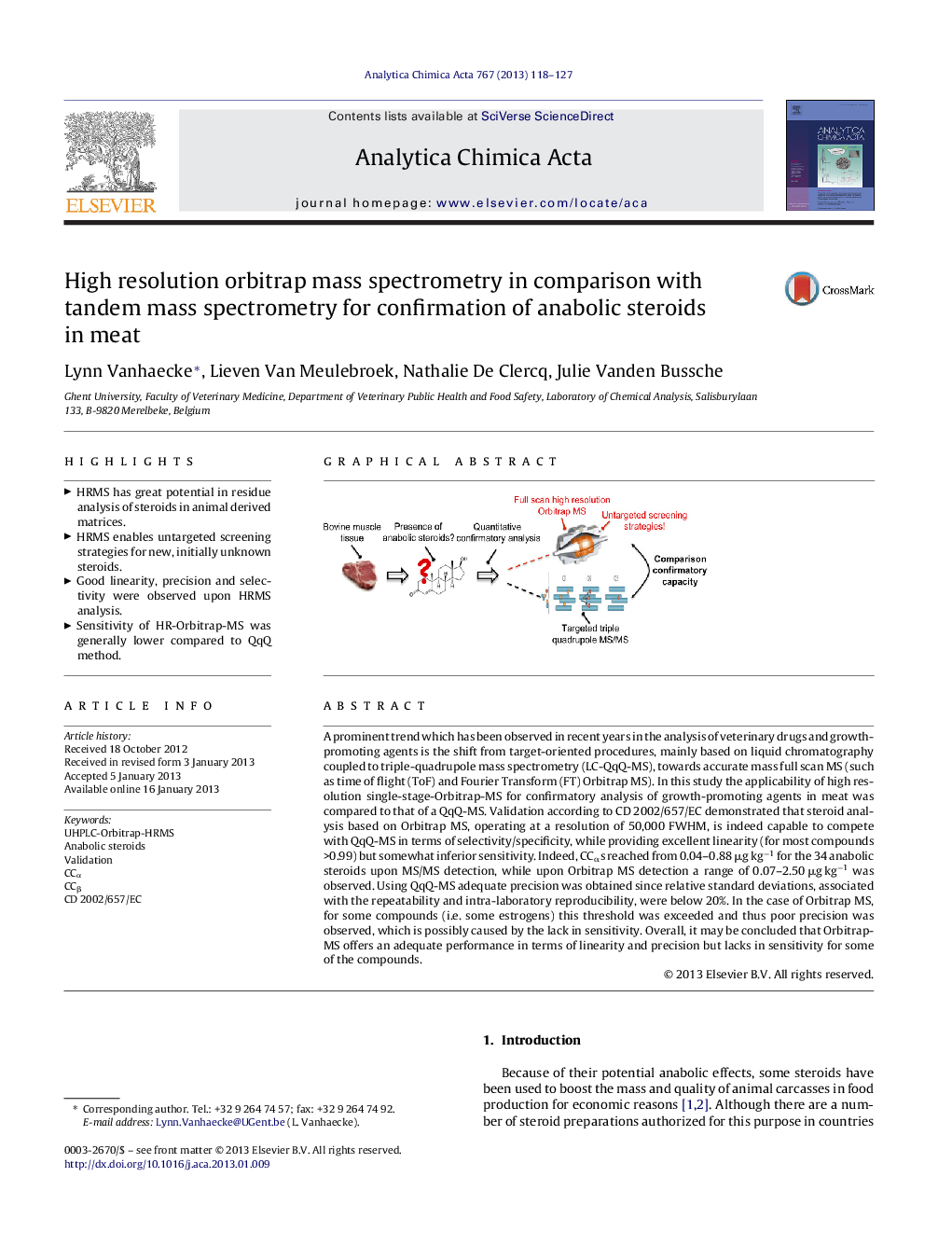| کد مقاله | کد نشریه | سال انتشار | مقاله انگلیسی | نسخه تمام متن |
|---|---|---|---|---|
| 1165545 | 1491065 | 2013 | 10 صفحه PDF | دانلود رایگان |

A prominent trend which has been observed in recent years in the analysis of veterinary drugs and growth-promoting agents is the shift from target-oriented procedures, mainly based on liquid chromatography coupled to triple-quadrupole mass spectrometry (LC-QqQ-MS), towards accurate mass full scan MS (such as time of flight (ToF) and Fourier Transform (FT) Orbitrap MS). In this study the applicability of high resolution single-stage-Orbitrap-MS for confirmatory analysis of growth-promoting agents in meat was compared to that of a QqQ-MS. Validation according to CD 2002/657/EC demonstrated that steroid analysis based on Orbitrap MS, operating at a resolution of 50,000 FWHM, is indeed capable to compete with QqQ-MS in terms of selectivity/specificity, while providing excellent linearity (for most compounds >0.99) but somewhat inferior sensitivity. Indeed, CCαs reached from 0.04–0.88 μg kg−1 for the 34 anabolic steroids upon MS/MS detection, while upon Orbitrap MS detection a range of 0.07–2.50 μg kg−1 was observed. Using QqQ-MS adequate precision was obtained since relative standard deviations, associated with the repeatability and intra-laboratory reproducibility, were below 20%. In the case of Orbitrap MS, for some compounds (i.e. some estrogens) this threshold was exceeded and thus poor precision was observed, which is possibly caused by the lack in sensitivity. Overall, it may be concluded that Orbitrap-MS offers an adequate performance in terms of linearity and precision but lacks in sensitivity for some of the compounds.
Figure optionsDownload as PowerPoint slideHighlights
► HRMS has great potential in residue analysis of steroids in animal derived matrices.
► HRMS enables untargeted screening strategies for new, initially unknown steroids.
► Good linearity, precision and selectivity were observed upon HRMS analysis.
► Sensitivity of HR-Orbitrap-MS was generally lower compared to QqQ method.
Journal: Analytica Chimica Acta - Volume 767, 12 March 2013, Pages 118–127